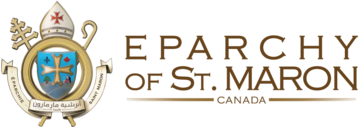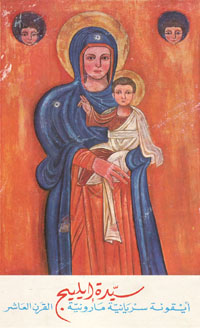The Maronite art:
A tree which its roots are planted in the first church,
A trunk of Syriac inheritance,
Branches of Catholic culture,
Fruits of Lebanese habits…
In its three aspects, form (architecture), sound (music) and color (religious art and icons), this art travels through centuries visiting people and places adding richness to its history.
A – The form (architecture)
The architecture of the Maronite churches is subject to a simple structure which is divided into three groups:
1. Churches formed of a rectangular nave joined by a semi circular apse where the altar is located.
2. Churches of the same type as the first group with a facade called narthex (portico which is at the main entrance).
3. Churches that have two naves, the first ends in a barrel vault and the second in a cross vault.


